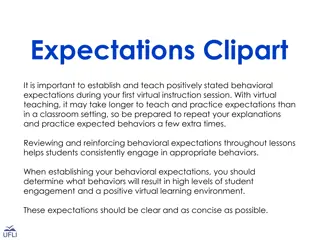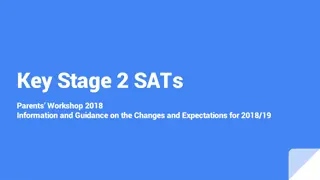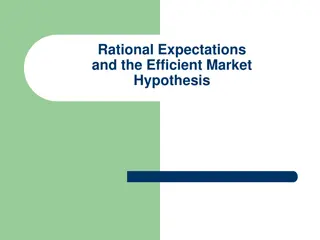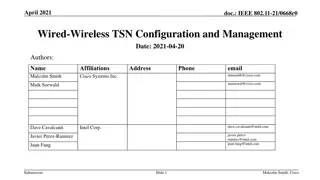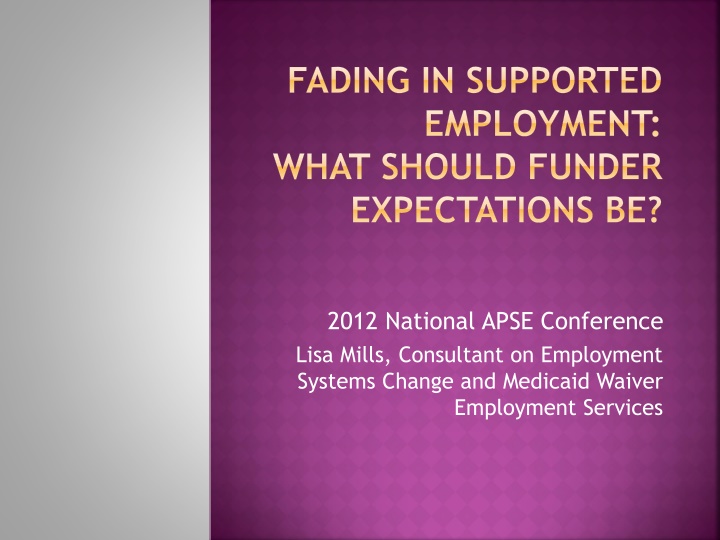
Expectations for Supported Employment Funding
Explore the evolving landscape of supported employment funding expectations, including historical perspectives, common approaches to job coaching authorization, implications of service levels, and the need for a valid method to assess job coaching needs effectively.
Download Presentation

Please find below an Image/Link to download the presentation.
The content on the website is provided AS IS for your information and personal use only. It may not be sold, licensed, or shared on other websites without obtaining consent from the author. If you encounter any issues during the download, it is possible that the publisher has removed the file from their server.
You are allowed to download the files provided on this website for personal or commercial use, subject to the condition that they are used lawfully. All files are the property of their respective owners.
The content on the website is provided AS IS for your information and personal use only. It may not be sold, licensed, or shared on other websites without obtaining consent from the author.
E N D
Presentation Transcript
FADING IN SUPPORTED EMPLOYMENT: WHAT SHOULD FUNDER EXPECTATIONS BE? 2012 National APSE Conference Lisa Mills, Consultant on Employment Systems Change and Medicaid Waiver Employment Services
HISTORY Supported Employment very small part of Medicaid waiver expenditures not a cost driver for overall system Many states have had poor service authorization guidelines (or no guidelines) for low utilization services Employment First and Employment for All goals place new emphasis on ensuring cost- effectiveness of Supported Employment
HISTORY Experience in Wisconsin and elsewhere showed two common approaches to authorizing job coaching: (a) Provider driven (b) Funder driven Neither approach involved sophisticated and valid approach to authorizing job coaching Result was often that either too much or too little service would be authorized.
IMPLICATIONS Too much service: Supported employment can t be expanded because its not cost-effective. Too little service: Individuals in supported employment lose their jobs due to inadequate support.
NEED VALID METHOD FOR ASSESSING JOB COACHING NEEDS Method should make sense to funding sources and providers Method should not make SE unavailable to people with most significant disabilities Method should allow for individualized service authorizations that can be adjusted over time
NEED VALID METHOD FOR ASSESSING JOB COACHING NEEDS Method should expect fading over time Method should account for exceptional situations Method should incorporate input from all involved not just one source
KEY QUESTIONS What principles should guide all service authorization decisions? What principles should guide the delivery of supported employment services?
KEY QUESTIONS What principles should guide the authorization of job coaching services? What information do funding sources need in order to make appropriate job coaching authorizations?
KEY QUESTIONS What guidance should funding sources have as they interpret information provided to them in order to decide on job coaching authorizations?
KEY QUESTIONS What if fading does not occur? What options does the funding source have?
BROAD PRINCIPLES FOR SERVICE AUTHORIZATIONS Provide the right support, in the right amount, at the right time. Effectively support an individual s desired outcomes in the most cost-effective way. Maximize independence, self-sufficiency and use of community and natural supports in order to reduce dependence on paid supports. Provide requested service if not doing so will likely create a significant negative outcome for the individual (e.g., job loss; reduction in hours due to lack of support). Investment in prevention is a critical component of a quality service system
PRINCIPLES OF SUPPORTED EMPLOYMENT Fading the job coach is a best practice in Supported Employment; fading helps ensure that member is achieving optimum self-sufficiency and that Supported Employment is cost-effective over time. A good job match and effective job coaching will generally result in fading of coaching over time; a good job match requires matching to the member s interests, skills and other important conditions for success as identified in the Supported Employment Assessment or Discovery process. Criteria for a good job match should be identified before job development begins.
PRINCIPLES OF SUPPORTED EMPLOYMENT Fading is possible due to a combination of strategies used by a trained and experienced job coach. These strategies include: job and task analysis; on-the-job training including systematic instruction; use of assistive technology or other adaptive aids; and engagement of natural supports. Fading is possible when a member achieves greater independence and/or inter-dependence with co- workers in performing his/her job, thereby reducing the need for the job coach. In some but not all situations, on-the-job supports can be faded completely. In these situations, stabilization monitoring is still critical to prevent job loss.
PRINCIPLES FOR AUTHORIZATION OF JOB COACHING The amount of job coaching authorized must be individually determined based on member need; the amount authorized must be regularly reviewed and adjusted accordingly. The funding source is not allowed to establish, through policy or practice, an across-the-board cap or time limit on job coaching supports.
MAKING APPROPRIATE JOB COACHING AUTHORIZATIONS What funding sources need to know: How many hours per week is the individual working? 1. How long has the individual been in this job, including time supported by VR? 2. How long has the individual had the current level of job coaching support? 3.
MAKING APPROPRIATE JOB COACHING AUTHORIZATIONS What funding sources need to know: Has there been any changes negative or positive - impacting the individual s need for job coaching? 4. Changes related to supervisor or co-workers Changes in availability of natural supports Changes in the person's job duties or expectations Changes in the person's health and or physical/cognitive condition as it relates to the person s performance on the job Changes in the person s life/home circumstances
MAKING APPROPRIATE JOB COACHING AUTHORIZATIONS What funding sources need to know: Results of the individual s most recent performance review by supervisor 5. Individual s unique support needs that may directly impact ability to fade job coaching 6. Acute health or behavioral needs A history of engaging in criminal behavior if unsupervised The presence of a protective services A history of vulnerability/exploitation if unsupervised
MAKING APPROPRIATE JOB COACHING AUTHORIZATIONS What funding sources need to know: Individual s opinion about continued need for job coaching support (& guardian s opinion, if one appointed) 7. Job coach s opinion about the individual s need for continued job coaching support 8.
MAKING APPROPRIATE JOB COACHING AUTHORIZATIONS What funding sources need to know: How does the employer/supervisor feel about a reduction in job coaching? 9. -If job coach recommending reduction can occur, confirm the job coach has consulted the employer/supervisor -If job coach not recommending a reduction in coaching but all other information suggests a reduction is feasible, contact employer/supervisor for input before making final decision on authorization
WHAT IF INCREMENTAL FADING IS NOT OCCURRING OVER TIME? Expect a fading plan to be created prior to authorization of continued job coaching Fading plan should include timeline, goal and method Examples: Timeline-Goal-Method: Within 12 weeks, the job coach will support the member 30 minutes less per shift by using systematic instruction and prompts delivered through a Personal Digital Assistant (PDA) to enable the member to do 30 more minutes of work without the job coach. Timeline-Goal-Method: Within 1 month, the job coach will leave the job site 30 minutes earlier on Monday, Tuesday and Thursday by introducing a picture instruction sheet and engaging a co- worker to provide needed prompts.
WHAT IF INCREMENTAL FADING IS NOT OCCURRING OVER TIME? If fading plan is unsuccessful over multiple authorization periods (e.g. over 1 year or more), consider whether its reasonable to expect that additional fading should be occurring. If yes: Consider requiring the job coach to obtain expert technical assistance to revise fading plan within 30 days as condition of reauthorization of coaching at same level Consider using a different job coaching provider with the needed skills to develop and implement a fading plan with this individual
IF CONTINUED FADING IS NOT REASONABLE TO EXPECT Consider if job coaching is at cost-effective level and therefore can be continued at this level indefinitely. Do this by calculating cost per hour worked by the supported employee Guidance: Coaching is cost effective if cost per hour worked is within range of what alternative services (day, pre-voc) cost per hour
IF CONTINUED FADING IS NOT REASONABLE TO EXPECT Consider authorizing workplace personal assistant at lower cost per hour Do not do prematurely or will cost more in long run Consider allowing job coaching to continue without expectation of fading or cost- effectiveness Look at IRWE or PASS to help fund this
FOR MORE INFORMATION Contact the Presenter: Lisa A. Mills, PhD Consultant 608-225-4326 LMills67@charter.net


